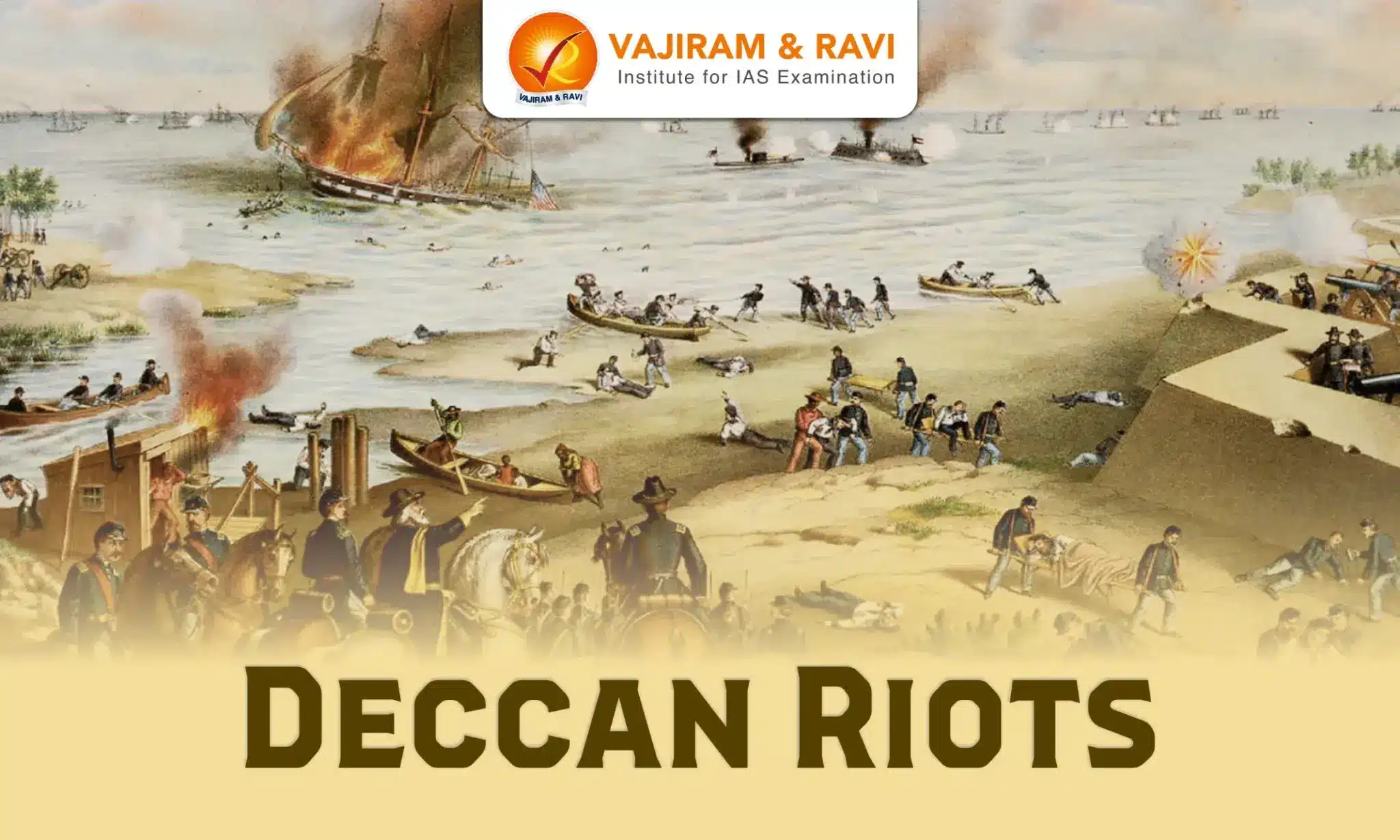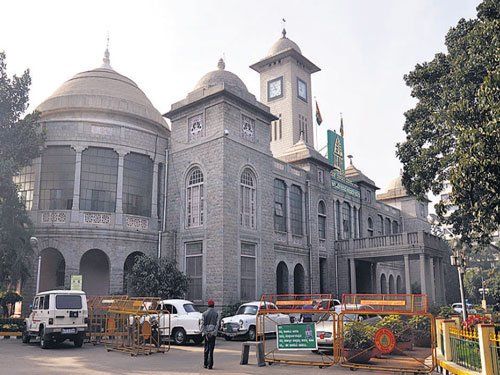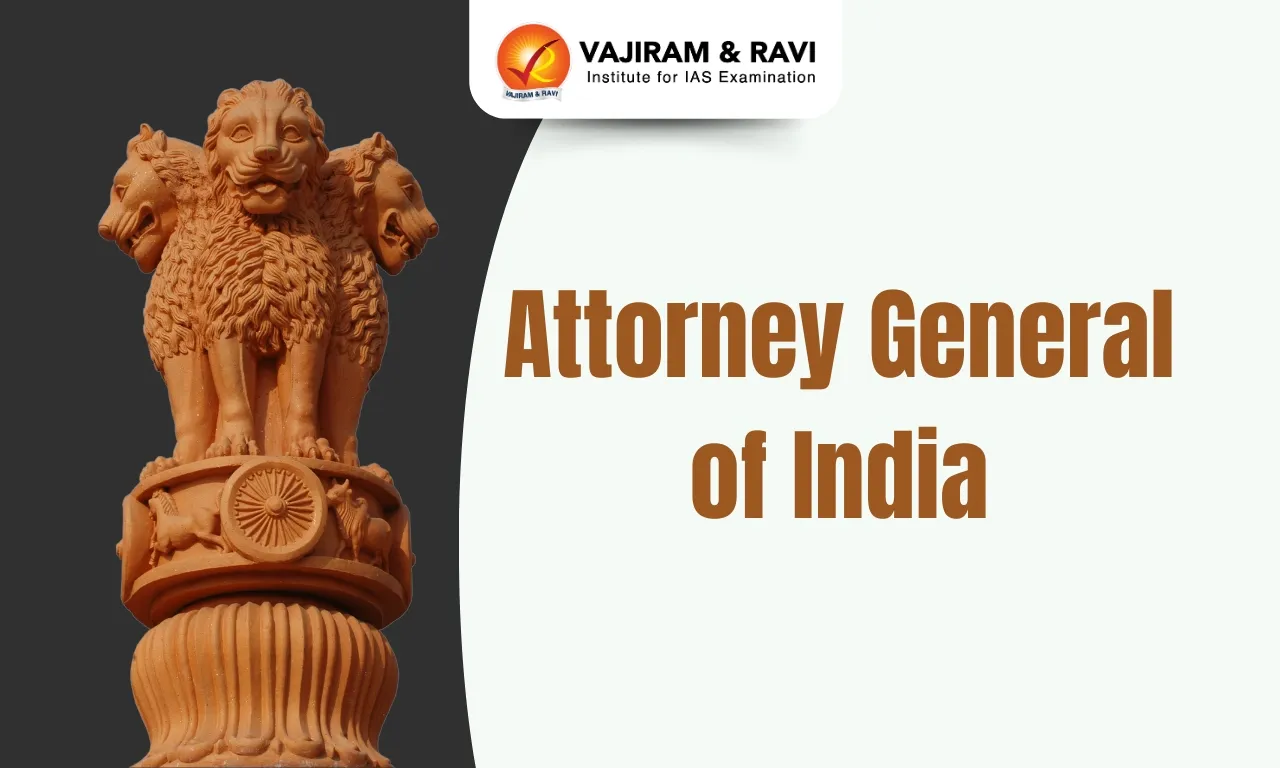The Deccan Riots of 1875 were a notable peasant uprising in the Poona and Ahmednagar districts of the Bombay Presidency, driven by the exploitation of peasants by moneylenders. The Ryotwari system mandated that peasants pay high, inflexible land revenues directly to the colonial government, regardless of agricultural productivity. Many peasants resorted to borrowing from moneylenders, leading to a cycle of escalating debt due to exorbitant interest rates.
The situation worsened after the American Civil War, as the decline in cotton demand left peasants unable to repay loans, exacerbating their discontent and fueling the uprising, ultimately influencing future agrarian reforms in British India.
Deccan Riots Background
The Deccan region, known for its agricultural productivity, was predominantly inhabited by peasants who depended on agriculture for their livelihood. The Deccan Riots were a significant peasant uprising against the oppressive economic conditions imposed by British colonial rule. Some of the reasons that ignited the uprising are as follows:
- Introduction of Ryotwari System: The British introduced the Ryotwari system in the Deccan, requiring peasants to pay high, rigid land revenues directly to the government, ignoring agricultural fluctuations due to droughts or poor monsoons.
- Peasant Indebtedness: Farmers frequently borrowed from moneylenders at high interest rates, resulting in significant indebtedness.
- Impact of the American Civil War: The American Civil War (1861) caused a surge in demand for Indian cotton, leading to a brief 'boom'. After the war, cotton demand declined sharply, impacting farmers' incomes.
- Exaggerated Revenue Demands: In 1867, the British increased land revenue by over 50%, adding financial pressure on farmers already struggling from crop failures and falling cotton prices post-Civil War.
- Moneylender Practices: During the Civil War, moneylenders generously lent to farmers, but post-war, they refused further loans. This left farmers, heavily reliant on them, unsupported and frustrated amid worsening conditions.
Deccan Riots Causes
The causes of the Deccan Riots were rooted in a combination of economic distress, oppressive practices by moneylenders, and the failure of the British administration to address the grievances of the peasants. The following factors were instrumental in triggering the riots:
- Economic Distress: By the mid-19th century, the shift to commercial agriculture and frequent crop failures, especially in cotton, led to a decline in income, leaving Deccan peasants unable to repay their debts.
- Evolution of the Ryotwari System: The Deccan Riots stemmed from the evolution of the Ryotwari system, which favoured moneylenders (Vanis) over cultivators (Kunbis).
- The courts and new laws reinforced caste divisions by prioritizing the rights of the moneylenders, further alienating the peasant class.
- Exorbitant Interest Rates: Desperate peasants were exploited by moneylenders through exorbitant interest rates on loans. The high interest often made it impossible for peasants to repay the principal, trapping them in a cycle of endless indebtedness.
- Land Revenue Policies: The British colonial administration's rigid land revenue system, particularly the Ryotwari settlement, imposed direct taxes on peasants based on their land holdings.
- Legal Bias: The colonial legal system was heavily skewed in favour of moneylenders. Courts typically sided with moneylenders in disputes over debts and land, leaving peasants with little recourse in legal matters.
- Cultural and Social Factors: Moneylenders, often from different communities such as Marwaris, were seen as outsiders by local peasants. This cultural divide heightened the resentment towards the moneylenders.
Deccan Riots Course
The Deccan Riots began in May 1875 in the village of Supa, located in the Poona district. The riots quickly spread to other villages in the region, including those in the Ahmednagar district. The course of the riots can be divided into several key phases:
- Initial Outbreak: The riots started in Supa, Pune, where peasants looted a moneylender's house, destroyed debt records, and set it on fire in response to years of exploitation.
- Spread of Riots: The unrest quickly spread across Pune and Ahmednagar, with thousands of peasants targeting moneylenders by burning records, looting, and, at times, resorting to violence.
- British Response: The British, initially unprepared for the riots' scale, swiftly deployed military and police forces, arresting leaders and initiating legal proceedings against the rebels.
- Suppression: With military intervention and arrests, the British effectively quelled the uprising by June 1875, forcing the peasants to return to their villages.
Deccan Riots Features
The Deccan Riots was a spontaneous peasant uprising against moneylender exploitation characterized by several unique features marked by collective action without central leadership, widespread participation across social groups, and tactics like destroying debt records and looting.
- Leadership: The riots were mostly leaderless, with peasants acting collectively. Some local leaders emerged, and organizations like the Poona Sarvajanik Sabha supported the peasantry.
- Participation: Peasants from various social and economic backgrounds participated, with women actively involved in attacking moneylenders and destroying debt records.
- Tactics and Method: Peasants employed tactics like destroying debt records, looting moneylenders' properties, and committing arson, focusing on erasing debt and regaining land control.
Deccan Riots Outcomes
The Deccan Riots had significant outcomes that had a lasting impact on the agrarian landscape of western India and influenced the policies of the British colonial administration:
- Deccan Agriculturists' Relief Act of 1879: The Deccan Agriculturists' Relief Act of 1879 was introduced after the Deccan Riots to reduce interest rates, prevent land alienation, and set up debt conciliation boards to resolve disputes between peasants and moneylenders.
- It aimed to alleviate the financial strain on Deccan agriculturists.
- Peasant Mobilization: The riots significantly raised peasant consciousness, proving the power of collective action. The peasants' defiance against moneylenders and colonial authorities inspired future agrarian movements across India.
- Change in British Agrarian Policy: The riots forced the British to rethink their agrarian policies, resulting in more pro-peasant measures aimed at addressing grievances, though these reforms were often limited.
- Legacy of the Riots: The Deccan Riots are remembered as a major symbol of peasant movements, exposing the rural population's vulnerabilities under colonial exploitation and emphasizing the need for agrarian reform.
| Other Related Posts | |
| Indigo Revolt | Peasant Movements in India |
| Pabna Revolt | Eka Movement |
| Deccan Riots | Bardoli Satyagraha |
| All India Kisan Sabha | Tebhaga Movement |
| Telangana Movement | |
Last updated on December, 2025
→ Check out the latest UPSC Syllabus 2026 here.
→ Join Vajiram & Ravi’s Interview Guidance Programme for expert help to crack your final UPSC stage.
→ UPSC Mains Result 2025 is now out.
→ UPSC Notification 2026 is scheduled to be released on January 14, 2026.
→ UPSC Calendar 2026 is released on 15th May, 2025.
→ The UPSC Vacancy 2025 were released 1129, out of which 979 were for UPSC CSE and remaining 150 are for UPSC IFoS.
→ UPSC Prelims 2026 will be conducted on 24th May, 2026 & UPSC Mains 2026 will be conducted on 21st August 2026.
→ The UPSC Selection Process is of 3 stages-Prelims, Mains and Interview.
→ UPSC Result 2024 is released with latest UPSC Marksheet 2024. Check Now!
→ UPSC Prelims Result 2025 is out now for the CSE held on 25 May 2025.
→ UPSC Toppers List 2024 is released now. Shakti Dubey is UPSC AIR 1 2024 Topper.
→ UPSC Prelims Question Paper 2025 and Unofficial Prelims Answer Key 2025 are available now.
→ UPSC Mains Question Paper 2025 is out for Essay, GS 1, 2, 3 & GS 4.
→ UPSC Mains Indian Language Question Paper 2025 is now out.
→ UPSC Mains Optional Question Paper 2025 is now out.
→ Also check Best IAS Coaching in Delhi
Deccan Riots FAQs
Q1. What was the reason for the Deccan riots?+
Q2. Who led the Deccan riots of 1875?+
Q3. What was the Deccan Riot Act?+
Q4. What were the causes of the Deccan Riots?+
Q5. What was the name of the district in which the Deccan riots broke out?+
Tags: deccan riots quest

















